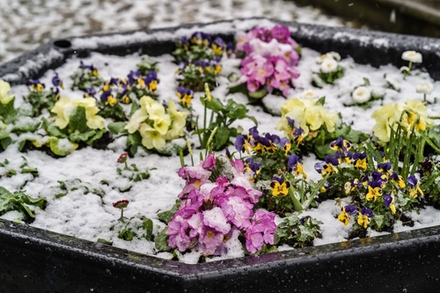Protecting Your Shrubs and Hedges from Snow Damage

As winter blankets Canada in its snowy embrace, our gardens enter a period of rest. However, this doesn't mean our responsibilities as gardeners pause until spring. One important winter task is to monitor snow coverage on shrubs and hedges to prevent damage. Additionally, understanding which plants are best suited for your area is crucial for a thriving garden. The updated Plant Hardiness Zones Map, as reported by Global News, is an invaluable tool for Canadian gardeners aiming for flourishing landscapes year-round.
Understanding the Impact of Snow on Plants
Snow can be both a protective insulator for plants against severe cold and a destructive weight that breaks branches and distorts growth. For shrubs and hedges, heavy snowfall can lead to splaying and breakage, especially in species not adapted to the weight. Evergreens, with their year-round foliage, are particularly susceptible as snow accumulates on their branches, increasing the risk of damage.
Preventive Measures for Snow Damage
To minimize the risk of snow damage, consider the following strategies:
- Select Hardy Plants: Opt for species known to withstand heavy snowfall. The Plant Hardiness Zones Map can guide you in choosing plants well-suited to your local climate conditions.
- Proper Pruning: Late fall or early winter pruning can help prevent snow and ice damage. Removing weak branches and reducing the overall density of the plant allows snow to fall through rather than accumulate.
- Physical Supports: For particularly vulnerable plants, installing stakes or wrapping them with burlap can provide extra support and reduce the burden of heavy snow.
- Gentle Removal: After a snowfall, gently brush off snow from branches starting from the bottom and working your way up to avoid adding stress to the branches.
The Role of the Plant Hardiness Zones Map
The Plant Hardiness Zones Map is a critical tool for gardeners in Canada. Updated for the first time in a decade, this map provides insights into the growing conditions of various regions across the country. By understanding your area's specific zone, you can make informed decisions about which plants are most likely to thrive in your garden, taking into account factors like minimum temperatures, precipitation, and the length of the growing season.
How to Use the Map
To make the most of the Plant Hardiness Zones Map, follow these steps:
- Locate Your Zone: Find your specific location on the map to determine your hardiness zone.
- Research Suitable Plants: Look for plants that are rated for your zone or colder. This ensures they are capable of surviving the local winter conditions.
- Consider Local Variations: Keep in mind microclimates and specific site conditions, such as soil type and exposure to wind, which can affect plant survival and growth.
Embracing the Winter Garden
While winter may seem like a dormant period for gardening, it's an opportunity to plan and prepare for the year ahead. By taking steps to protect your shrubs and hedges from snow damage and using the Plant Hardiness Zones Map to guide your plant selections, you can ensure a healthy and vibrant garden that withstands the challenges of the Canadian climate. Remember, a little effort during the colder months can lead to rewarding results once the warmth of spring returns.



